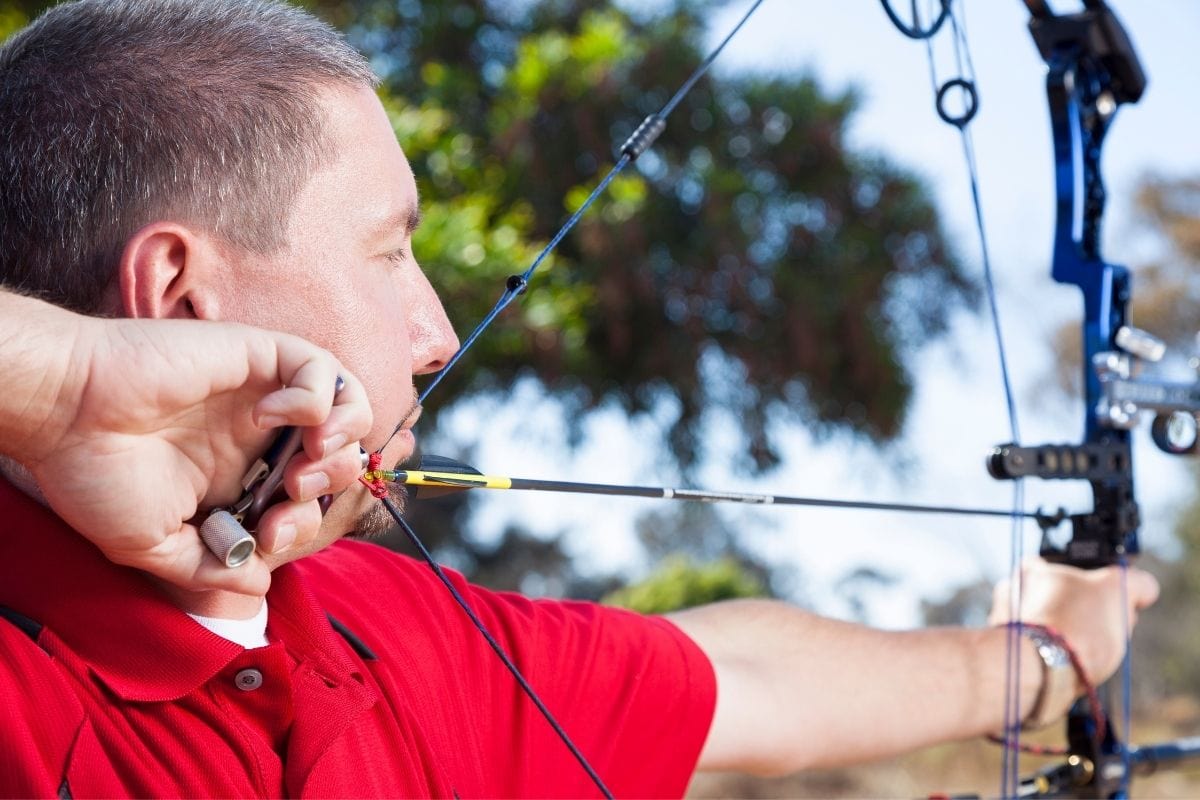When it comes to the best of archery, Olympic archers have got it down. They consistently hit the bullseye and get those amazing scores we all strive for.
But how exactly do they succeed at getting accurate results every single time?
It’s mostly down to technique, as well as the equipment that they use. But one question arises, and that is if Olympic archers use releases with their bows to make things easier for themselves.
Today, we will cover everything you need to know about this topic.
We’re going to take a look at why Olympic archers don’t use releases, as well as why this isn’t recommended for use with a recurve bow.
So, let’s look at everything we need to know about Olympic archers using releases!
Contents (Jump to Topic)
ToggleDo Olympic Archers Use Releases?
No, Olympic archers don’t use releases. This is because releases are only really meant to be used with compound bows, and compound bows aren’t allowed to be used at the Olympic level (this might change in the future).
Olympic archers shoot using recurve bows, which don’t require releases as part of the bow set up. Even though some recurve archers do use a bow release with their set up, this isn’t common practice.
Olympic rules prohibit them from recurve bows. Releases offer too much advantage, making the shot more about gadgets than skill. At the Olympic level, success comes from the archer, not the gear.
Without using releases, this makes archery more down to the archer’s skill than that of their equipment.
Seeing as Olympic-level archery is looking for the best of the best, it’s only natural that they would be looking for the archer’s skill.
USA Archery rules dictate that bow releases can’t be used in competition with recurve bows. Recurve archers can only use a stabilizer, a sight, and a clicker.
Why Do Olympic Archers Let The Bow Drop?
Olympic archers let the bow drop immediately after releasing the arrow. This eliminates any inadvertent movement from their bow hand that could influence the arrow’s path once shot. By not gripping or clutching the bow, the archer minimizes torque that could throw off the shot.
In theory, an arrow released cleanly should fly straight without human interaction.
But even the slightest quiver of the bow post-release can ruin the accuracy. This is why an archer’s follow-through is as crucial as their draw.
By allowing the bow to drop, Olympic archers can focus entirely on keeping their bow arm and hand still in the moment of release.
No tension or torque will steer the shot off course. The bow hand can smoothly return to rest.
The wrist sling catches the falling bow so the archer doesn’t have to grab it. Their concentration remains unbroken, ready for the next shot.
This discipline and consistency are vital for competing at the Olympic level, where each shot must be flawlessly executed. Proper technique eliminates any variables that could jeopardize accuracy and precision when it matters most.
Do Olympic Archers Use Peep Sights?
Olympic archers do not use peep sights. Peep sights are made for compound bows, which are prohibited in Olympic competitions.
Peep sights attach directly to the bowstring, allowing compound archers to align their gaze through the peep and the sight pin for greater accuracy.
To add a peep, an Olympic archer would have to modify their equipment, which violates the rules.
Recurve bows demand minimal attachments and a purity of form.
So peep sights have no place in Olympic archery, where success comes solely from an archer’s mastery of their chosen recurve bow.
What Brand Bows Do Olympic Archers Use?
When choosing a bow, Olympic archers weigh personal preference, but many medalists opt for Hoyt. The brand is trusted for unparalleled accuracy.
Hoyt’s Formula XI riser provides stability through balanced weight distribution. Their lightweight Velos limbs generate power to hit targets 70 meters away. This combination of control and force is key.
For Olympic glory, the equipment must match the archer’s dedication. Hoyt’s precision engineering ensures every component works in harmony, eliminating variables.
On the world stage, victory comes in milliseconds. Equipment can make or break dreams. For archers pursuing perfection, Hoyt delivers the consistency needed, shot after shot.
In a competition where records fall by millimeters, archers must have full faith in their tools. Hoyt’s dominance on the podium proves their gears’ reliability when gold is on the line.
What Arrow Rest Do Olympic Archers Use?
When selecting an arrow rest, Olympic archers lean toward bolt-on magnetics for maximum durability. Plastic rests wear out faster under the demands of elite training and competition.
A loose or fallen rest mid-shot would destroy concentration right when focus is most critical. At the Olympic level, absolute stability in equipment is essential.
The arrow rest must become an extension of the bow itself. Bolt-on magnetics firmly anchor the rest in place shot after shot. This reliability allows archers to tune out all distractions.
With medals on the line, confidence in gear is everything. A bolt-on magnetic rest will stay fixed precisely where it needs to be, shot after flawless shot. Such steadfast stability liberates archers to perfect their skill.
Before you Go …
In summary, Olympic archers do not use bow releases, as competition rules prohibit them. This allows pure archery skill to prevail.
By restricting additional accessories, the Olympics emphasize mastery of recurve fundamentals. With limited gear, an archer’s talent and technique take center stage.
The competition seeks the best of the best, achievable only through rigorous training of both mind and body. By keeping recurve archery in its simplest form, the Olympics honor this pursuit of excellence above all else.






